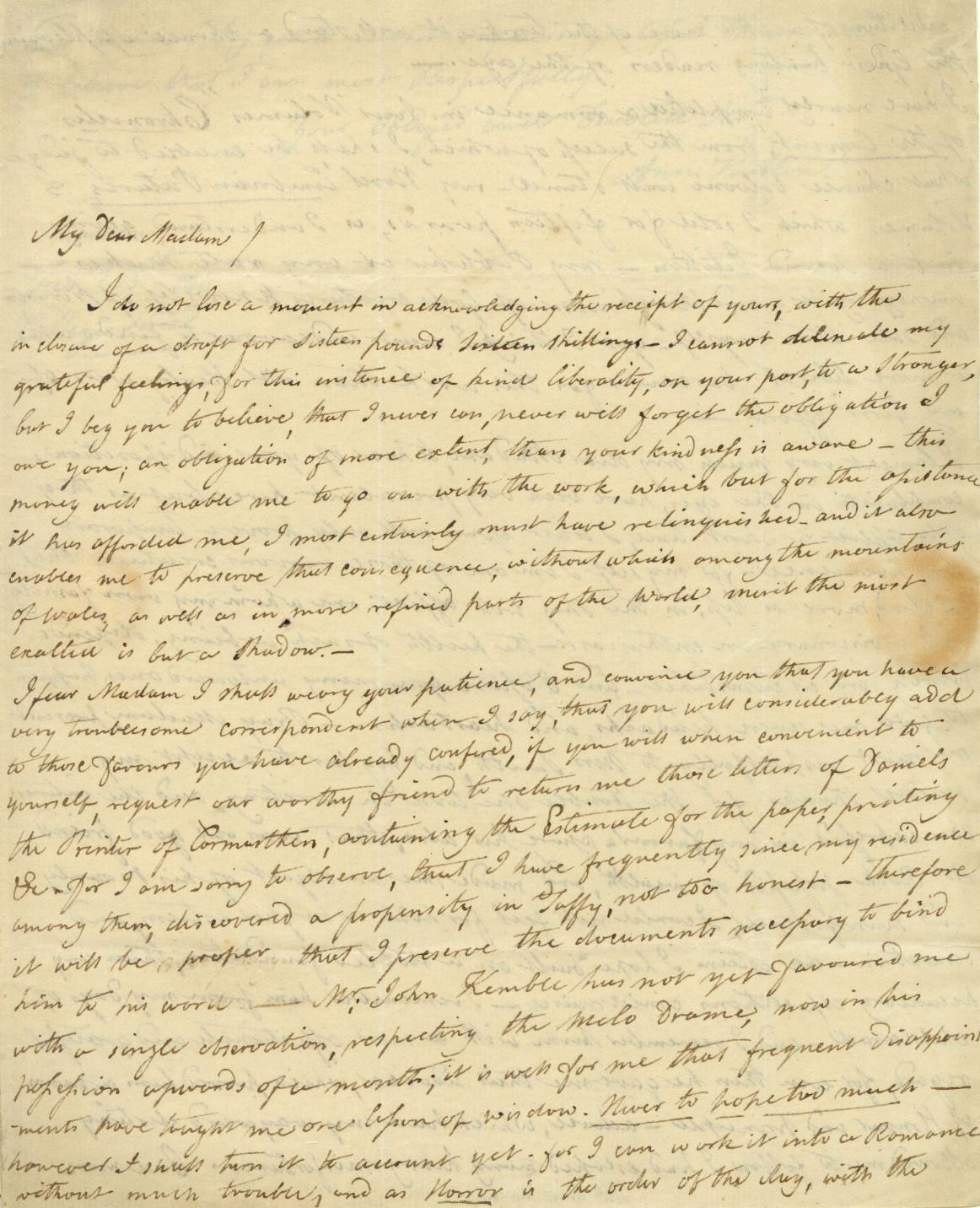Ann Julia Hatton (1764–1838) lived a highly dramatic life, which was appropriate for a member of the Kemble family whose ranks were full of actors and actresses, the most famous among them being Sarah Siddons. According to the entry on Hatton in the Oxford Dictionary of National Biography, she married young, but soon discovered that her husband was a bigamist. Other incidents of her younger years include attempting to poison herself in Westminster Abbey and being accidentally shot in the eye while working in a bagnio (ostensibly a coffee house that offered Turkish baths, but often a house of prostitution).
She married again in 1792 and set off with her husband, William Hatton, for America, where she wrote the libretto for the first opera on a Native American subject, Tammany, or The Indian Chief. Later she fled to Nova Scotia during a yellow fever scare, returned to England, ran a bathing house and a dancing school, and eventually fetched up in Swansea, Wales. In an 1871 history of the Kemble family, a contemporary described her in her Swansea years: “She squints—a large woman, writes novels, &c.”
The Morgan has four letters by Hatton from this period of her life, written to a “Miss Smith” in Dublin. These letters were cataloged in depth for the first time this year. They are full of detail about writing projects she has underway, gripes about her famous family, and re-tellings of her own story. In the following letter, she speaks confidently—even jokily—about shaping her work to the demands of the market. Of a melodrama, Zaffini, The Knight of the Bloody Cross, she writes:
"I can work it into a Romance without much trouble, and as Horror is the order of the day, with the addition of a little more of the terrible, it will stand a chance of pleasing the Ghost hunting readers of the age.”
Sal Robinson is a Levy Project Cataloger in the Literary and Historical Manuscripts department, conducting research on a large collection of British letters from the sixteenth to the twentieth centuries. She has also worked as an editor for international literature at Houghton Mifflin Harcourt and Melville House.
The Leon Levy Foundation is generously underwriting a major project to upgrade catalog records for the Morgan's collection of literary and historical manuscripts. The project is the most substantive effort to date to improve primary- research information on a portion of this large and highly important collection.

